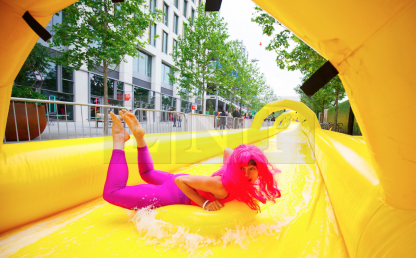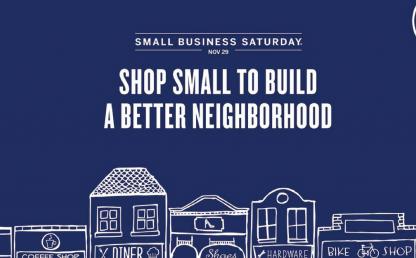Digital marketing: how can marketers apply new trends and innovations?

Technology continues to advance at an incredible rate and many new trends and innovations are said to be able to revolutionize digital marketing. These include AI/bots, virtual and augmented reality, live streaming, and the Internet of Things. What are they? Are they relevant to your brand? And can you integrate them into your marketing campaigns?
Let’s take a closer look.
What is hot
1. AI and bots
First up is artificial intelligence (AI) and bots, chatbots in particular. What is a chatbot? It is a computer program designed to simulate a conversation with a human. An example is the Facebook chatbot, part of Facebook Messenger which launched in April 2016.
There’s plenty of excitement around the possibility of messenger bots as more and more people spend time on messaging apps. It engages consumers and pushes content in a channel they use frequently. Can this new technology prove effective for content as well as customer service?
Let's take a look at how this is effectively utilized by certain brands.
Copa90 is a publisher and global football fan network. It introduced an extensive Facebook Messenger chatbot for the Euro 2016 soccer tournament to keep fans in the loop with the latest news. People just had to go into FB messenger and search for Copa 90. Updates included form guides, fixtures, as well as trending articles. This was a great way to engage fans and creatively compete with the larger news outlets.

Pizza Express is a pizza chain testing out the waters with chatbots. It launched an in-store marketing campaign where customers could scan a Facebook Messenger code on their smartphone and type #shakethetree to launch a game. Playing the game gives customers the chance to win free menu items. In one week, it had 75,000 players. The brand also spoke about FB chatbots being useful for giving customers quick information like opening hours and table bookings as well as taking payments.
While AI chatbots are already on the scene thanks primarily to Facebook, their full adoption is still in development. They can certainly be used now to help answer simple questions for your customers. Additionally, you can consider a campaign like Copa90 and Pizza Express where you utilize the personal one-on-one connection of FB messenger along with chatbots to connect with your audience.
Note that if you decide to implement chatbots, you need to be careful that they are used correctly. They should be relevant, entertaining, data-driven, and have solid rationale behind them in order to drive significant engagement from the audience and avoid annoying or spamming consumers.
2. Immersive marketing with virtual and augmented reality
Using Virtual reality (VR) is also an innovative way of marketing. In essence, it offers a simulated experience in an environment generated by computers. This is an excellent outlet for immersive marketing, placing audiences in designed scenarios.
Some companies have already made excellent use of VR as a marketing tool. Volvo, for one, used it to allow potential customers to ‘test drive’ their XC90 model with Google Cardboard. By taking them down a virtual country road in their luxury vehicle, Volvo made them part of the experience.
In another example, McDonald's in Sweden ditched the traditional Happy Meal toy. Instead, they turned the box the meal came in into a virtual headset allowing children to play a virtual game called Slope Stars.

Click here to know more about how VR can be used in marketing campaigns.
Don’t forget about Augmented Reality (AR) either. AR helps to enhance the experience of our current reality through the use of high-definition video, audio, and animation. These are integrated into a consumer's view of the real world and delivered by a special headset, Hololens, or smart devices (phone or tablet). Pokemon Go proved this technology could go viral in 2016.
AR can be superior to VR as it interacts with the consumer in the real environment. Ikea makes excellent use of AR to help ensure customers choose the right-sized furniture for their home. This is achieved through the use of their traditional catalog, an IKEA app, and a smart device. Essentially, it uses AR to place furniture in your home, allowing you to see if the dimensions actually fit in the area you have chosen.

Lacoste has gone one step further and allowed consumers to ‘try on’ footwear using AR. It even gives the options for users to share their fittings, thus exposing the brand to new target markets.
VR and AR are rising technologies that can bring marketing to another level of engagement with your brand.
3. Live streaming videos
Live streaming videos are videos that are shared in real time as they are recorded. Platforms such as Periscope, Facebook Live, Instagram Stories, and Bigo for Asian markets have enabled these and they are catching on. But what makes them successful? Well, they offer users a more authentic feel as they are uncut and unedited. In a world of procured content on social media, these are real and unpredictable. Brands have been using them to form better relationships with their audience and to increase engagement.
An excellent example of the creative use of live video is the Dunkin Donuts Valentine campaign. Here, a live streaming video showed viewers a test kitchen where new products are created and tested. It ended with a massive wedding cake made to a donut theme and attracted 36,000 live views.
Use live video streaming to connect with your audience and give them a look into the faces behind the brand.
4. Mobile first - Not new but still growing
Next up is mobile marketing. Although it’s not new, it is still important to have an effective strategy in place. This is particularly true in the Asia-Pacific region. Why? Well according to a study conducted by E-Marketer in the third quarter of 2016, internet users in this region are more likely to own a smartphone than their peers in Europe and North America.
As a content marketer, you need to ask yourself how your brand embraces and responds to this form of digital consumption. Remember, you have many options to choose from. These include apps, mobile-friendly websites, mobile ads, and mobile newsletters. Many other aspects of mobile are also coming to the forefront including voice searches and mobile payments, for example. These need to be factored into your mobile marketing strategy.
As an example of excellent mobile marketing, let's take a look at Pizza Hut in Hong Kong. Here, a decision was made to change from printed coupons to digital ones, available for mobile. People can now come into the store and get a discount using just their phone. This saved the company up to 90% on printing costs, while revenue increased by 7% to 10%. A great example of how to use mobile marketing to your advantage.
What is not there yet:
5. Internet of things
Finally, let’s take a look at a trend that is not quite developed; the Internet of Things (IoT). What exactly is it? Well, it is connecting all devices to the internet from phones and televisions to lights, refrigerators, and beyond. In fact, by 2020, analyst firm Gartner, predicts over 26 billion devices will be connected.
So how does this apply to marketers? The IoT will provide data in real-time that can be tapped into. This can help push data-driven marketing to new heights by delivering customized content to users.
Let’s look at an early example of IoT tech from 2013. At the Dreamforce IT conference, a vending machine was setup that was powered by tweets. Users had to interact with it using tweets to be able to gain access to the goods inside. This was an excellent example of creating awareness of the possibilities of marketing in the future. That said, many of these technologies are still in their infancy. It will take time to see how they can be utilized effectively in relevant marketing applications.
In conclusion, we have seen that many new technologies and innovations can be used in digital marketing to help promote brands. They provide an unprecedented level of engagement with your target audience. You can connect with customers on an ongoing basis through their smartphone using chatbots, immerse them in your experience using VR, and provide helpful relative tools with AR.
What we have seen is only the beginning of this integration of advanced technology into our lives and marketing campaigns. For more information about how you can apply these trends and innovations to your digital marketing campaigns, contact us today.
 Insights
Insights

